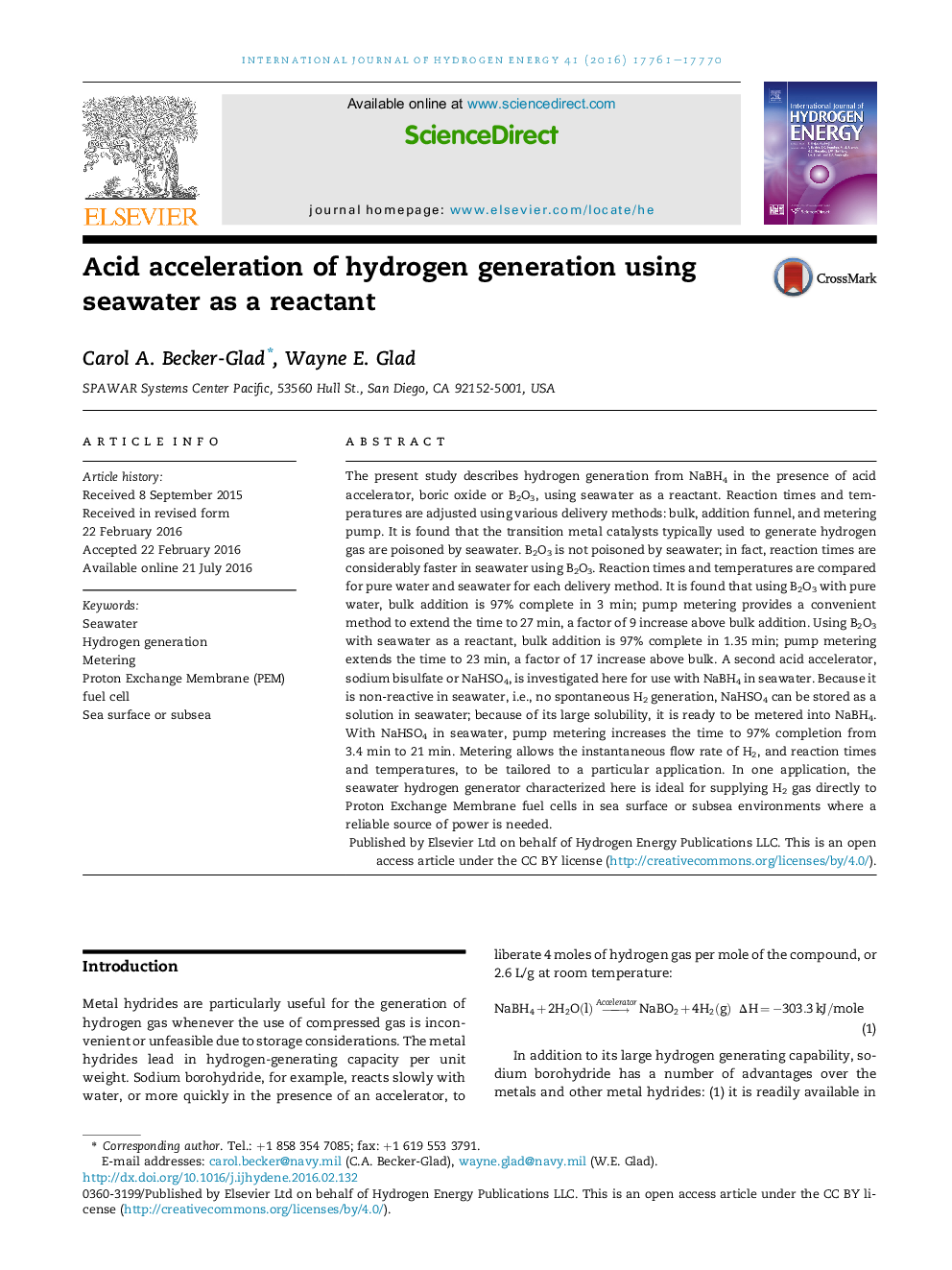| Article ID | Journal | Published Year | Pages | File Type |
|---|---|---|---|---|
| 5147522 | International Journal of Hydrogen Energy | 2016 | 10 Pages |
Abstract
The present study describes hydrogen generation from NaBH4 in the presence of acid accelerator, boric oxide or B2O3, using seawater as a reactant. Reaction times and temperatures are adjusted using various delivery methods: bulk, addition funnel, and metering pump. It is found that the transition metal catalysts typically used to generate hydrogen gas are poisoned by seawater. B2O3 is not poisoned by seawater; in fact, reaction times are considerably faster in seawater using B2O3. Reaction times and temperatures are compared for pure water and seawater for each delivery method. It is found that using B2O3 with pure water, bulk addition is 97% complete in 3Â min; pump metering provides a convenient method to extend the time to 27Â min, a factor of 9 increase above bulk addition. Using B2O3 with seawater as a reactant, bulk addition is 97% complete in 1.35Â min; pump metering extends the time to 23Â min, a factor of 17 increase above bulk. A second acid accelerator, sodium bisulfate or NaHSO4, is investigated here for use with NaBH4 in seawater. Because it is non-reactive in seawater, i.e., no spontaneous H2 generation, NaHSO4 can be stored as a solution in seawater; because of its large solubility, it is ready to be metered into NaBH4. With NaHSO4 in seawater, pump metering increases the time to 97% completion from 3.4Â min to 21Â min. Metering allows the instantaneous flow rate of H2, and reaction times and temperatures, to be tailored to a particular application. In one application, the seawater hydrogen generator characterized here is ideal for supplying H2 gas directly to Proton Exchange Membrane fuel cells in sea surface or subsea environments where a reliable source of power is needed.
Related Topics
Physical Sciences and Engineering
Chemistry
Electrochemistry
Authors
Carol A. Becker-Glad, Wayne E. Glad,
